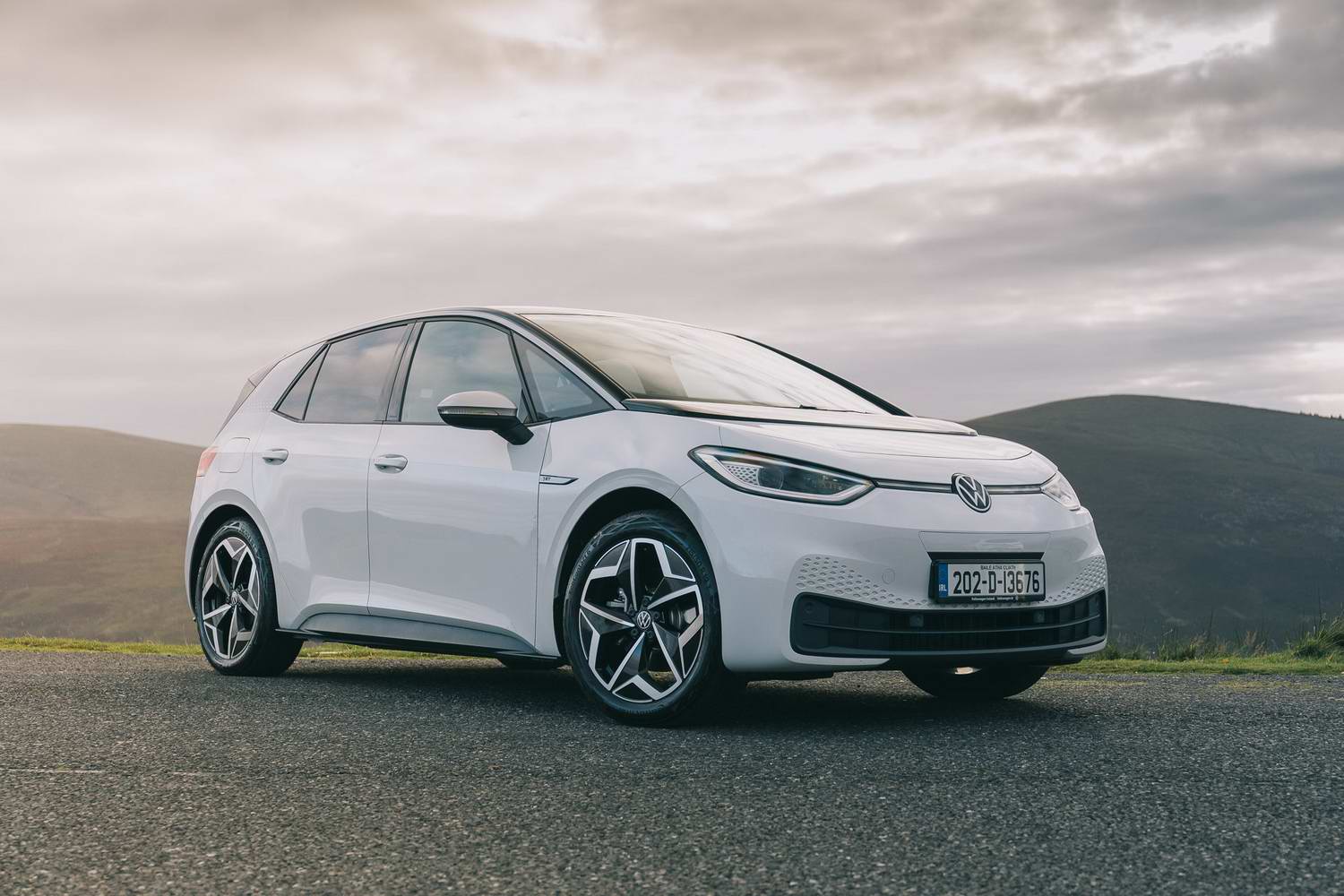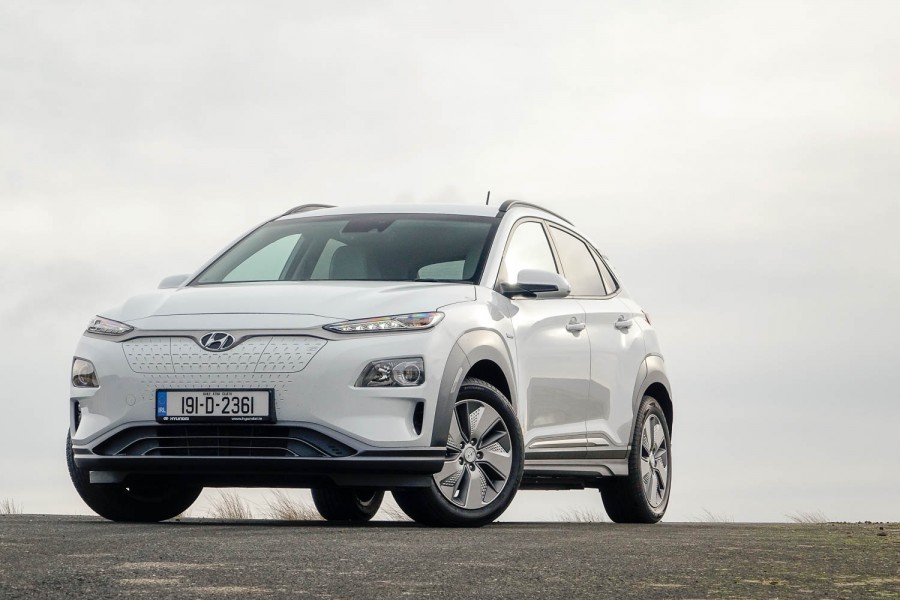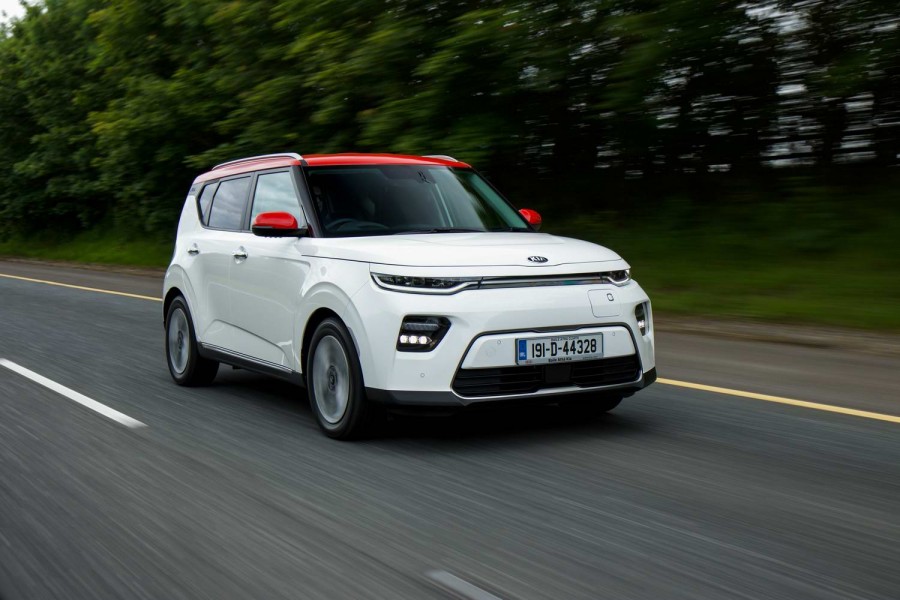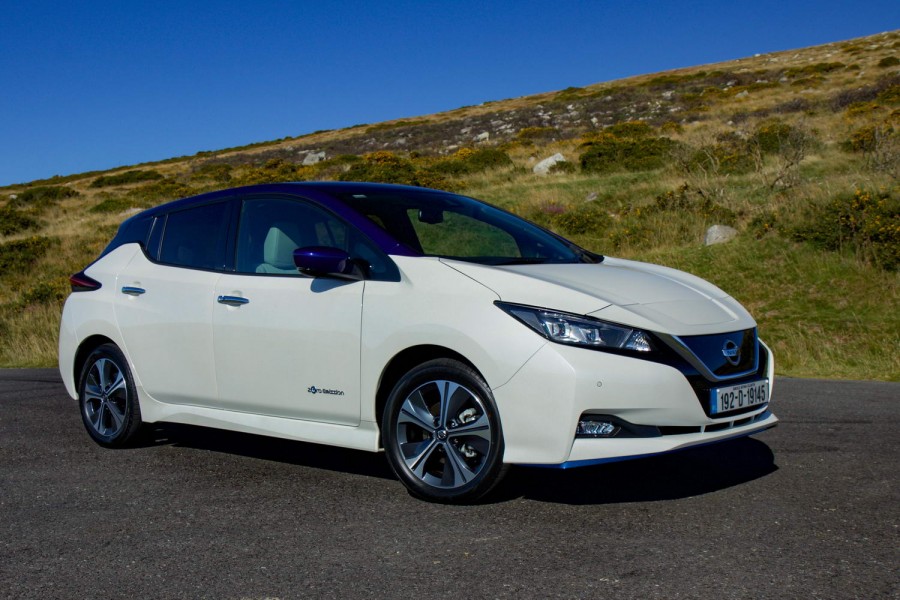Volkswagen has big plans for its all-electric ID brand and finally it has arrived on Irish shores. The first model is the ID.3, a roughly Golf-sized five-door hatchback that goes big on space and, well, cool. It hits the market initially in high-spec '1st Edition' specification and will be difficult for any EV buyer to ignore.
In the metal
While the Volkswagen ID.3 is about the same length as the new VW Golf 8, the ID.3 has a much longer wheelbase, it's wider and taller, too. So, while it's good to think of the ID.3 as a 'Golf-sized' hatchback, a glance into the back seats reveals that it has much more room inside than its conventionally powered sibling. The rear doors open wide and there's much more legroom, which means that it's easier to fit in bulky car seats (and not have your back kicked by the cute little occupants of said child seats) than in most cars with the same external footprint as the ID.3. It also has a boot that's a little bigger than that of the Golf's, if nothing special for the sector. The rear seats split and fold, but they create a step rather than one continuous flat floor. There is no additional storage up front in the form of the so-called 'frunk.'
The cabin initially comes across as swish and high-tech. And it is to a certain extent, but the material selection is less touchy-feely than it is in the new Golf, for example. Instrumentation is taken care of by a small but quite crisp screen you view through the steering wheel, while most controls are built into the centrally positioned touchscreen system. This looks great, is quite intuitive to use and sensibly mounted high up to minimise time your eyes are away from the road. It's still a touchscreen, though, so it has to be looked at to be used. And the shortcut buttons below it are smooth, so there's no advantage to them other than making it quicker to access certain functions (parking, climate control, driving modes and assistance features). Indeed, it's a shame they don't offer tactile feedback. Same story for the controls on the door, to operate the rear windows and door locks, etc. In contrast, the touch-sensitive controls on the lovely steering wheel do offer haptic feedback and the steering wheel rim itself is perfectly proportioned.
There's a BMW i3-like drive selector integrated with the instrumentation screen, which feels of good quality to operate, and it frees up the space between the front seats or lots of storage. There's a neat wireless charging tray and USB-C ports there as well as the expected cupholders.
Driving it
A lovely touch in the ID.3 model we tested is that, with the key on your person, if you get in, the air conditioning starts up and controls the cabin temperature before you press anything. Indeed, it appears that you don't even need to press the 'start' button on the steering column; just push the brake pedal (it has a 'pause' symbol on it in the 1st Edition cars) and twist the drive selector and away you go. At urban speeds, the ID.3 is hugely impressive. The electric motor is almost inaudible, while the low-speed damping, comfort and refinement are top-notch.
With 310Nm of torque available from the off, and up to 204hp, the ID.3 is quicker than it needs to be, which means it effortlessly makes progress and keeps up with traffic. As with the best electric cars on the market, it can feel much quicker than it is due to the relative lack of noise. Saying that, at motorway speed, we found that there was a little too much wind roar over the windscreen for our liking, and more road noise being transmitted up through the tyres and chassis structure than expected. The new Golf beats it hands down for refinement at such speeds. If you plan on using your ID.3 on the motorway a lot, it may be worth considering the Max version, as that gets a different windscreen, designed to further insulate sound from the cabin.
Nonetheless, the ID.3's suspension ensures that the car feels stable and surefooted at all speeds, so it doesn't feel like a vehicle that should be kept to urban confines. To assess it, we took it over our most challenging test roads, and it performed well. Driven sedately, the suspension does a great job of absorbing bumps and keeping the wheels in contact with the ground and the body level. Push a little harder and it still does well, with well-judged steering and body control, though the brakes, which feel well-modulated at lower efforts, are less confidence inspiring. If you're clumsy on the entry to a tight corner in the dry, the onset of understeer at the front axle will make itself known with unruly tyre squeal. And unless you really push hard, there's little sense of the power going to the back wheels. Sure, there can be a moment's tyre scrabble on the exit of a damp junction, but the traction control system is very quick acting. In summary, it's pleasant and enjoyable to drive, but not a sporty car.
In terms of efficiency, we managed 285 kilometres on a full charge, with 21km indicated range remaining. Some 175km of that was on motorway and dual carriageway, with the active cruise control set to the speed limit. The on-board computer indicated an average energy consumption figure of 11.8kWh, which doesn't seem to tie in with the battery capacity and distance travelled, so we're not sure what that's about. More realistic was the 18.7kWh consumption value recorded on the motorway etc over the 175km journey. That suggests about 300km range even when using faster roads, so the car should do remarkably close to its official figure if in and around town.
What you get for your money
To begin with, the Volkswagen ID.3 is offered solely in '1st Edition' guises, all using the same 204hp electric motor in the back and the 58kWh battery pack. The regular ID.3 1st costs €33,715 on-the-road at the time of writing (including an €800 delivery charge and the full VRT rebate and SEAI grant available to private buyers). Standard equipment includes heating for the seats and steering wheel, ambient lighting, 18-inch alloy wheels, all-LED lighting outside, auto lights, two-zone climate control, Discover Pro satnav, keyless start, four USB-C ports, adaptive cruise control and speed limiter, Android Auto and Apple CarPlay compatibility, parking sensors front and rear, auto wipers and a comprehensive suite of active safety functions.
On top of that, buyers of the 1st Edition cars get a three-pin home socket charging cable, a Mode 3 Type 2 charging cable, 100kW DC charging capability and a WeCharge RFID card with one year or 2,000kWh free charging - said to be worth €600.
The ID.3 1st Plus, as tested here, features an upgraded interior, 19-inch wheels, power-folding door mirrors, tinted rear windows, upgraded exterior lighting, rear view camera and a few other items, for €40,570 on-the-road, while the top-ranking ID.3 1st Max, at €47,410 on-the-road, adds upgraded seating, 20-inch alloys, a panoramic roof, augmented reality head-up display, wireless charging and more safety equipment. It's worth noting that the larger wheels of these models bring the official range down a little, to 419km in the Plus model and 410km in the Max version.
Volkswagen offers buyers three different versions of the ID. Charger for at home, starting at €393 - or €1,155 including full installation. If you go for the latter, you're eligible for an additional SEAI grant of €600.
It's worth checking out volkswagen.ie for the finance offers, too, as there are low PCP finance rates on the higher-spec models.
The ID.3's battery pack has an eight-year/160,000km warranty, incidentally.
Summary
On the face of it, the Volkswagen ID.3 seems too expensive to profoundly change the landscape and get more buyers into electric cars. But actually, even before the cheaper models arrive next year, the ID.3 compares well with what's already on the market, sitting above the superminis such as the Renault Zoe and Opel Corsa-e in terms of positioning, image, price and space, eclipsing the Nissan Leaf for appeal, while giving the excellent Kia and Hyundai crossovers a really good run for their money. Yet it's usefully cheaper than the Tesla Model 3. The ID.3 is not a perfect car, but it is a very good one, and it certainly moves the electrification of the Volkswagen brand forward a step.












































